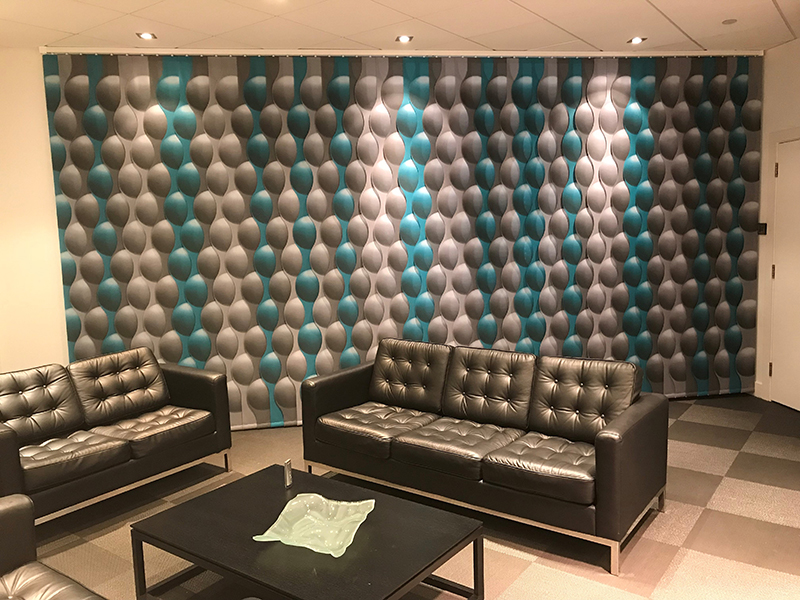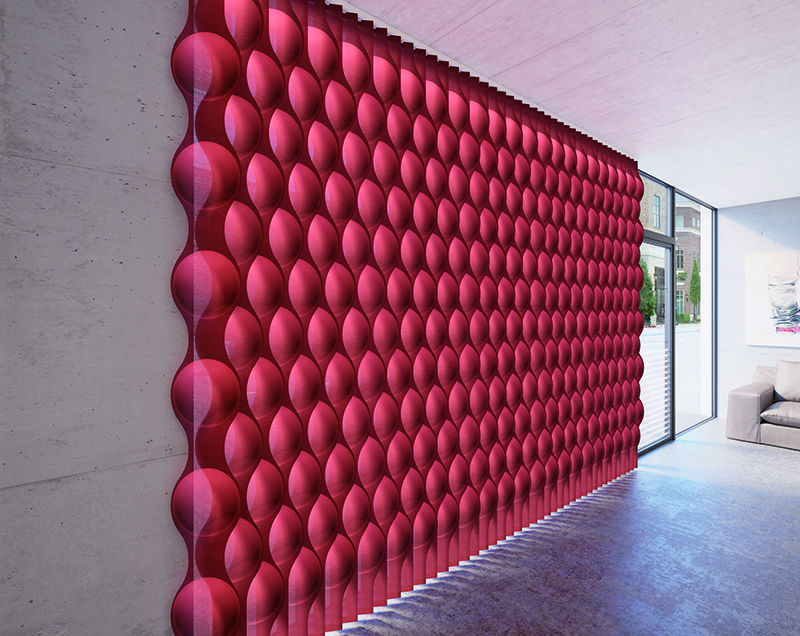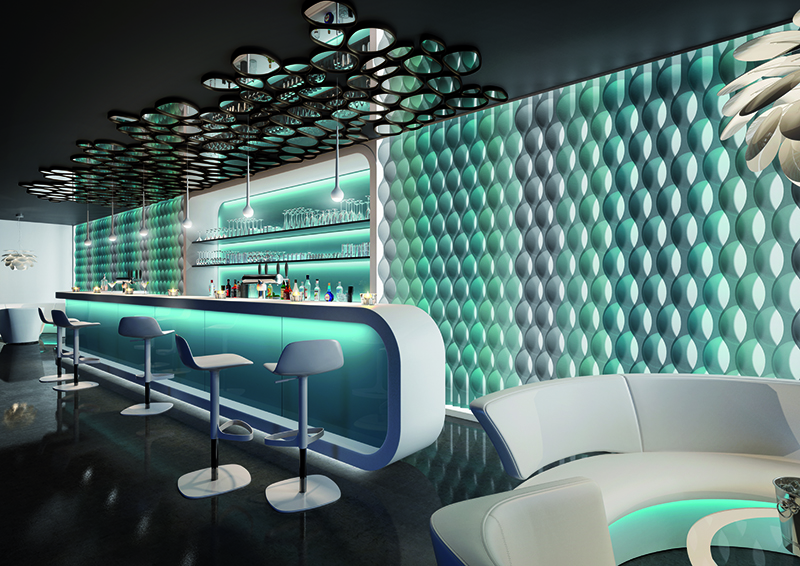Who knew? Vertical Blinds can be an eye-catching focal point
A collaboration between a Swedish textile designer and Silent Gliss – the leading global supplier of curtain tracks and blinds – meant the creation of a wonderful 3D printed product we spotted in their BDC (Business Design Centre) showroom at 2017’s Sleep event. The beautiful ‘Vertical Wave’ blind by Silent Gliss is an enhancement of their laser-cut vertical blind system. There is now a stunning 3D appearance that adds a breathtaking lighting effect. Vertical Waves can be used as blinds or a room divider and either way would catch anyone’s eye.
The beautiful ‘Vertical Wave’ blind by Silent Gliss is an enhancement of their laser-cut vertical blind system. There is now a stunning 3D appearance that adds a breathtaking lighting effect. Vertical Waves can be used as blinds or a room divider and either way would catch anyone’s eye.
This window solution is particularly well-suited for floor-to-ceiling windows but with it’s unique design, high-quality material and colour ranges the options are endless. What is so special about the new ‘Vertical Wave’ product?
What is so special about the new ‘Vertical Wave’ product?
Silent Gliss launched Vertical Wave blinds in 2014, and they wanted to make Vertical Blinds interesting again. They are a series of laser cut vertical blinds adjusted to suit modern architecture and they create a striking interior environment with unusual lighting and acoustic effects. Eva Marmbrandt is a Swedish textile designer who created 3 unique designs, with a louvre concept, for this product.
“My goal is to consolidate and develop the significance of textiles in public environments. During the last few years I have focused on developing new materials and forms in the area of vertical blinds, where I exploit the unique advantage that this system offers to designers.” – Eva Marmbrandt
Last year another designer came to Silent Gliss with the idea of 3D printing, and they combined the 2 design concepts to come up with quite a remarkable result! What is the process for printing and making this product?
What is the process for printing and making this product?
After a mock up is created from a given colour palette. This is then approved and a couple of pieces of louvre are printed to make sure the colour transfers to the fabric as per the mock up.
The full width of fabric is then 3D digitally-printed and the louvres are cut using a laser cutter, on a flat table. The fabric used has been carefully researched and tested, it is highly heat-resistant to avoid burning during the laser cutting process and yet has be receptive to ink during the digital printing process. A fabric that could handle both processes without degrading was certainly a challenge.
Contact Silent Gliss for more information…




